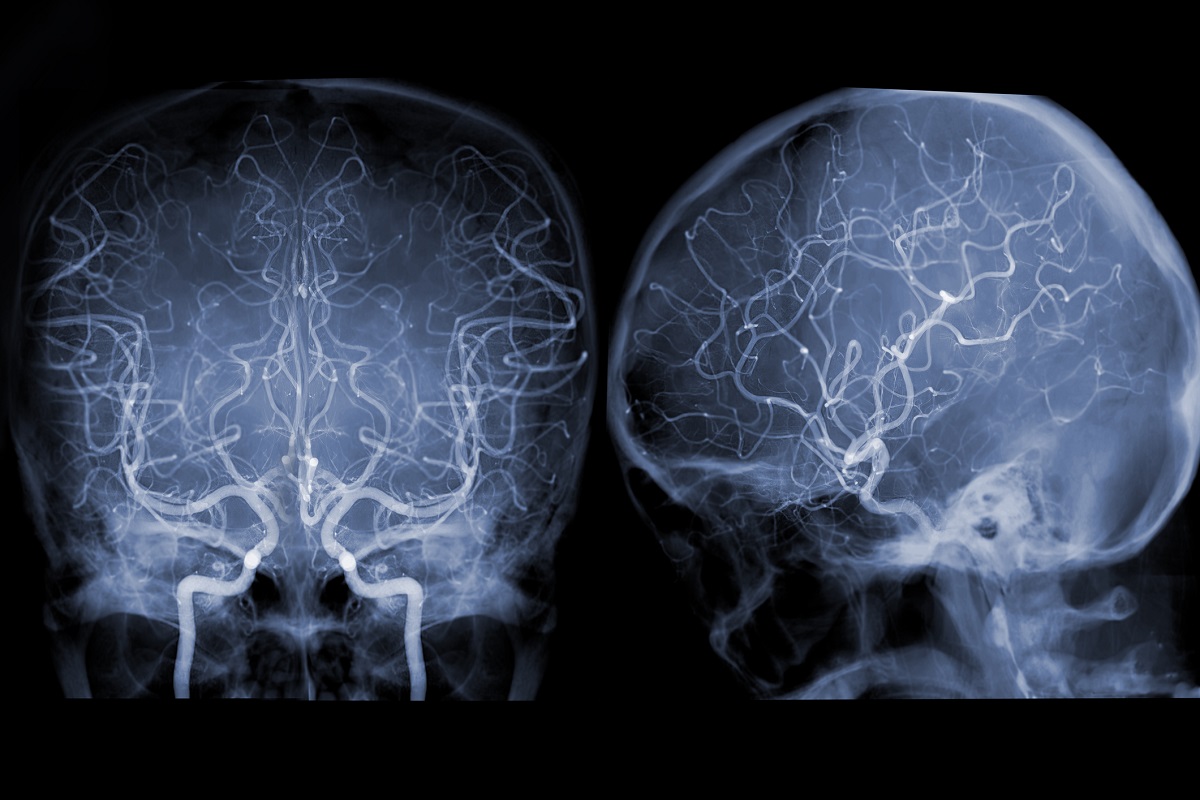The Medical Minute: The dangers of cerebral aneurysms

Aneurysms form in weak spots in arteries, often where the blood vessels form branches.
“An aneurysm is like a blister on a water hose,” said Dr. Scott Simon, a neurosurgeon at Penn State Health Milton S. Hershey Medical Center. “They can happen on any blood vessel in the body.”
For roughly 6.8 million Americans currently living with aneurysms, those blisters occur in the brain, according to the Brain Aneurysm Foundation.
When these cerebral aneurysms are small and not close to rupturing, most people don’t even know they’re there. The little lesions most often cause no symptoms and are discovered when a doctor stumbles across them while performing a scan or examination for some other problem like headaches, trauma or concerns about a stroke.
But when aneurysms rupture, the results can be cataclysmic. Fifty percent of the time, the end result is a fatality. Of the survivors, 66% suffer permanent neurological damage. Five hundred thousand people die worldwide every year because of aneurysms.
However, as common and deadly as they are, much about what causes aneurysms remains a mystery. Simon discusses aneurysms, what steps you can take to prevent them and what doctors like him can do to stop them before they rupture.
What causes aneurysms?
“We don’t know.” Simon said. “We know that they can run in families. We know that they happen more frequently in smokers. But we see plenty of patients without a family history who do not smoke. Some combination of genetic and environmental factors that we have yet to fully elucidate.”
Who is most likely to have an aneurysm?
According to the Brain Aneurysm Foundation:
- Most people who have brain aneurysms are ages 35-60, but they can happen in all age groups – including children. Most people develop aneurysms after they turn 40.
- Women are more likely than men to have a brain aneurysm.
- Women older than 55 have a higher risk of brain aneurysm rupture than men.
- African-Americans and Hispanics have more brain aneurysms than white people.
- Twenty percent of people with an aneurysm in their brain have more than one.
Can you prevent them?
You can cut out smoking or not take it up, Simon said. You can also take steps to control your blood pressure, which also can be a factor. But in many cases, nothing yet known to science can prevent them.
What are the warning signs that you have an aneurysm?
Often, there are none, Simon said. Most cerebral aneurysms are tiny – about 1/8 of an inch to just under an inch in size – and they most often occur in the arteries at the base of the brain.
When they grow, they can press against nerves and cause symptoms, such as, according to the National Institutes of Health:
- pain above and behind the eye
- numbness
- weakness
- paralysis on one side of the face
- a dilated pupil in the eye
- vision changes or double vision.
But even a larger aneurysm might not cause any symptoms. “The vast majority of patients get a head scan for some other reason, like a stroke or a TIA (transient ischemic attack) and their aneurysms are discovered incidentally,” Simon said.
What happens when they rupture?
When an aneurysm bursts, it bleeds. Doctors call it a hemorrhage. In some cases, the rupture might not be so severe, and the person suffering it might feel a sudden, severe headache.
Other symptoms include:
- double vision
- nausea
- vomiting
- stiff neck
- sensitivity to light
- seizures
- loss of consciousness (either brief or prolonged)
- cardiac arrest
In many cases, “we worry it can cause a subarachnoid hemorrhage,” Simon said. “Subarachnoid is the space in the brain where the blood goes. Unfortunately, it carries with it a 40% mortality rate.”
A rupture can stem the brain’s oxygen supply in some cases, causing an ischemic stroke. The Brain Aneurysm Foundation estimates that 3-5% of all new strokes are caused by ruptured aneurysms.
Fifteen percent of people who suffer this kind of hemorrhage in the brain die either instantaneously or on the way to the hospital.
Is there any kind of screening that can be done to determine your risk?
For the general population, doctors don’t recommend testing. However, if you have more than one relative with an aneurysm, doctors recommend screening every five years starting at age 30, Simon said.
Tests that can discover aneurysms include imaging techniques computed tomography scans and magnetic resonance imaging.
How do you treat an aneurysm?
In many cases, you don’t. Often aneurysms don’t rupture, grow or cause problems, and doctors opt to keep them under surveillance to make sure they stay that way.
Surgery is usually required to remove an aneurysm that’s a threat, and doctors will weigh a number of factors, like the lesion’s location and the age and health of the patient.
Related content:
- The Medical Minute: Aortic dissection starts a race against the clock
- The Medical Minute: Detection and treatment of aneurysms bring challenges
The Medical Minute is a weekly health news feature produced by Penn State Health. Articles feature the expertise of faculty, physicians and staff, and are designed to offer timely, relevant health information of interest to a broad audience.
If you're having trouble accessing this content, or would like it in another format, please email Penn State Health Marketing & Communications.
